- Clone
- MHN4-2 (See other available formats)
- Regulatory Status
- RUO
- Other Names
- Neurogenic locus notch homolog protein 4
- Isotype
- Mouse IgG1, κ
- Ave. Rating
- Submit a Review
- Product Citations
- publications
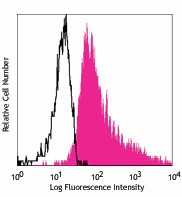
-

Human acute lymphoblastic leukemia cells HPB-ALL stained with MHN4-2 PE
| Cat # | Size | Price | Quantity Check Availability | Save | ||
|---|---|---|---|---|---|---|
| 349003 | 25 tests | $141 | ||||
| 349004 | 100 tests | $323 | ||||
Neurogenic locus notch homolog protein 4 (Notch 4) is a transmembrane heterodimer in which the extracellular domain contains 29 EGF repeats and 3 LNR repeats. The intracellular domain contains 5 ANK repeats, 1 PEST motif, and 1 RAM23 domain. Notch 4 controls many developmental processes in the cell such as differentiation, proliferation, and apoptosis. In addition, it also plays a role in vascular, renal, and hepatic development. Notch 4 is expressed by a variety of tissues such as heart, lung, placenta, liver, skeletal muscle, kidney, pancreas, spleen, lymph node, thymus, bone marrow, and fetal liver. The Notch 4 ligands are Jagged1, Jagged2, Delta1, Delta3 and Delta4. After ligand binding, Notch 4 is cleaved by the TNF-α converting enzyme (TACE). The extracellular domain remains on the cell surface while the intracellular domain is released and translocated to the nucleus where it binds to CBF-1, leading to the expression of genes of the Hairy/Enhancer of Split (HES) and HES-related repressor protein (HERP) families.
Product DetailsProduct Details
- Verified Reactivity
- Human
- Antibody Type
- Monoclonal
- Host Species
- Mouse
- Immunogen
- Human Notch 4-transfected cells
- Formulation
- Phosphate-buffered solution, pH 7.2, containing 0.09% sodium azide and BSA (origin USA)
- Preparation
- The antibody was purified by affinity chromatography and conjugated with PE under optimal conditions.
- Concentration
- Lot-specific (to obtain lot-specific concentration and expiration, please enter the lot number in our Certificate of Analysis online tool.)
- Storage & Handling
- The antibody solution should be stored undiluted between 2°C and 8°C, and protected from prolonged exposure to light. Do not freeze.
- Application
-
FC - Quality tested
- Recommended Usage
-
Each lot of this antibody is quality control tested by immunofluorescent staining with flow cytometric analysis. For flow cytometric staining, the suggested use of this reagent is 5 µl per million cells in 100 µl staining volume or 5 µl per 100 µl of whole blood.
- Excitation Laser
-
Blue Laser (488 nm)
Green Laser (532 nm)/Yellow-Green Laser (561 nm)
- RRID
-
AB_10612931 (BioLegend Cat. No. 349003)
AB_10613104 (BioLegend Cat. No. 349004)
Antigen Details
- Structure
- Transmembrane protein. Extracellular domain forms a heterodimer and contains 29 epidermal growth factor-like repeats and 3 Lin/Notch Glp repeats. The intracellular domain contains 5 CDC10/Ankryn repeats, 1 proline, glutamate, serine, threonine-rich motif,
- Distribution
- Heart, lung, placenta, liver, skeletal muscle, kidney, pancreas, spleen, lymph node, thymus, bone marrow, and fetal liver.
- Function
- Controls many cell developmental processes such as differentiation, proliferation and apoptosis. Plays a role in vascular, renal, and hepatic development.
- Interaction
- MAML1, MAML2 and MAML3, CBF-1, Smad3, and Smad4
- Ligand/Receptor
- Jagged1, Jagged2, Delta1, Delta3, and Delta4
- Biology Area
- Angiogenesis, Apoptosis/Tumor Suppressors/Cell Death, Cell Biology, Immunology, Transcription Factors
- Antigen References
-
1. Katoh M and Katoh M. 2007. Int. J. Oncol. 30:247.
2. Kerbel RS. 2008. N. Engl. J. Med. 358:2039.
3. Chen VC, et al. 2008. Nat. Biotechnol. 26:1169.
4. Emuss V. 2009. PLoS Pathog. 5:e1000616.
5. Harrison H, et al. 2010. Cancer Res. 70:709. - Gene ID
- 929 View all products for this Gene ID
- UniProt
- View information about Notch 4 on UniProt.org
Related Pages & Pathways
Pages
Related FAQs
- What type of PE do you use in your conjugates?
- We use R-PE in our conjugates.
Other Formats
View All Notch 4 Reagents Request Custom Conjugation| Description | Clone | Applications |
|---|---|---|
| Purified anti-human Notch 4 | MHN4-2 | FC |
| PE anti-human Notch 4 | MHN4-2 | FC |
| APC anti-human Notch 4 | MHN4-2 | FC |
Customers Also Purchased
Compare Data Across All Formats
This data display is provided for general comparisons between formats.
Your actual data may vary due to variations in samples, target cells, instruments and their settings, staining conditions, and other factors.
If you need assistance with selecting the best format contact our expert technical support team.
-
Purified anti-human Notch 4
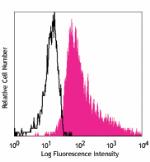
Human acute lymphoblastic leukemia cells HPB-ALL stained wit... -
PE anti-human Notch 4

Human acute lymphoblastic leukemia cells HPB-ALL stained wit... -
APC anti-human Notch 4
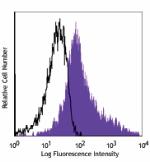
Human acute lymphoblastic leukemia cells HPB-ALL stained wit...
 Login/Register
Login/Register 









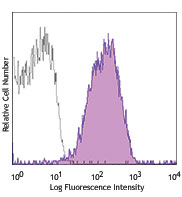
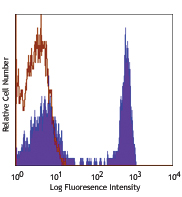
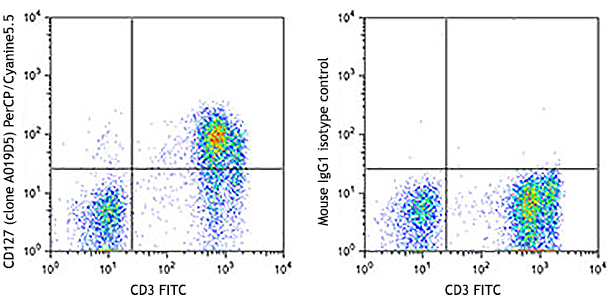
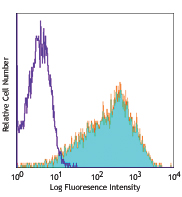



Follow Us